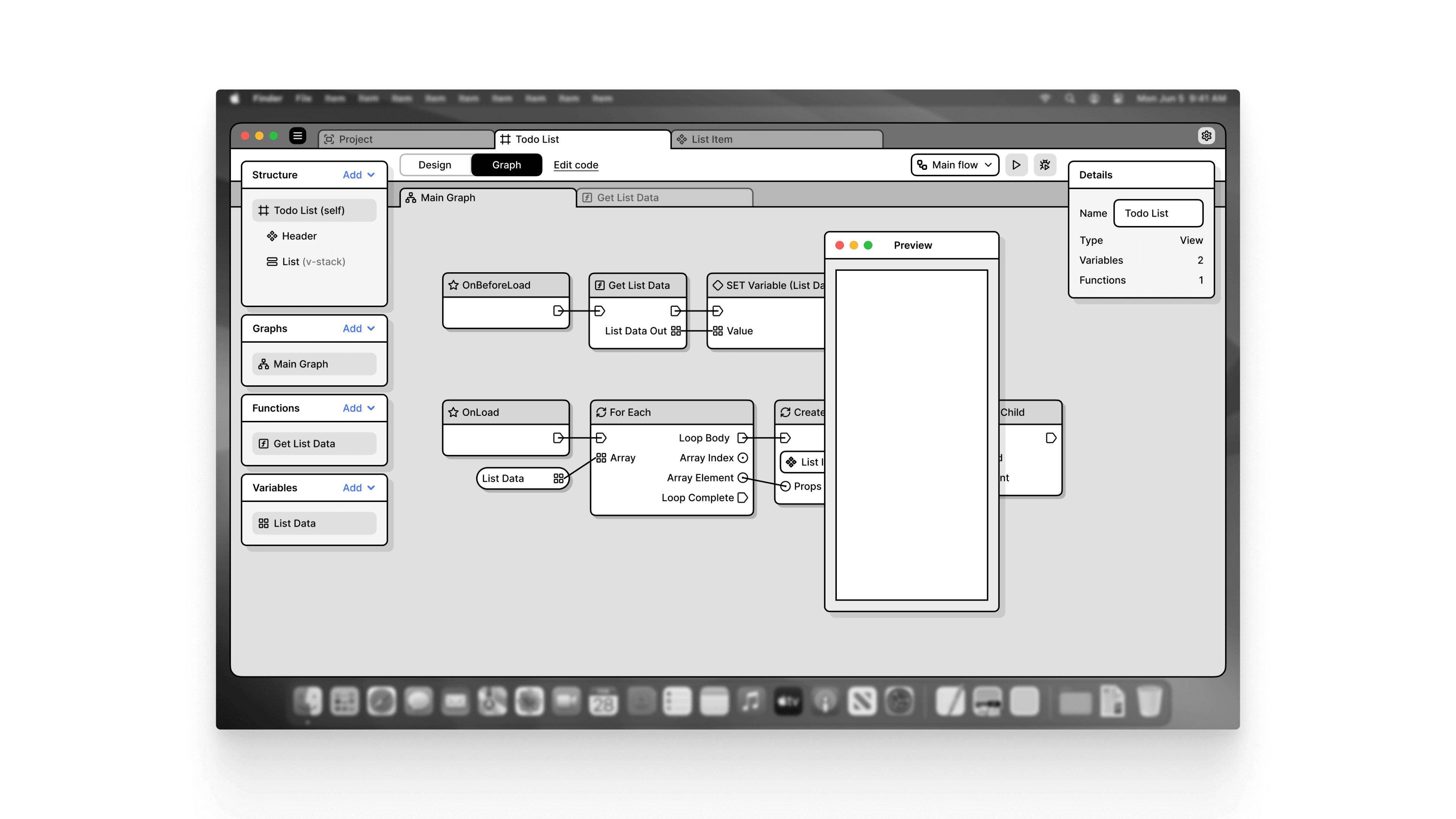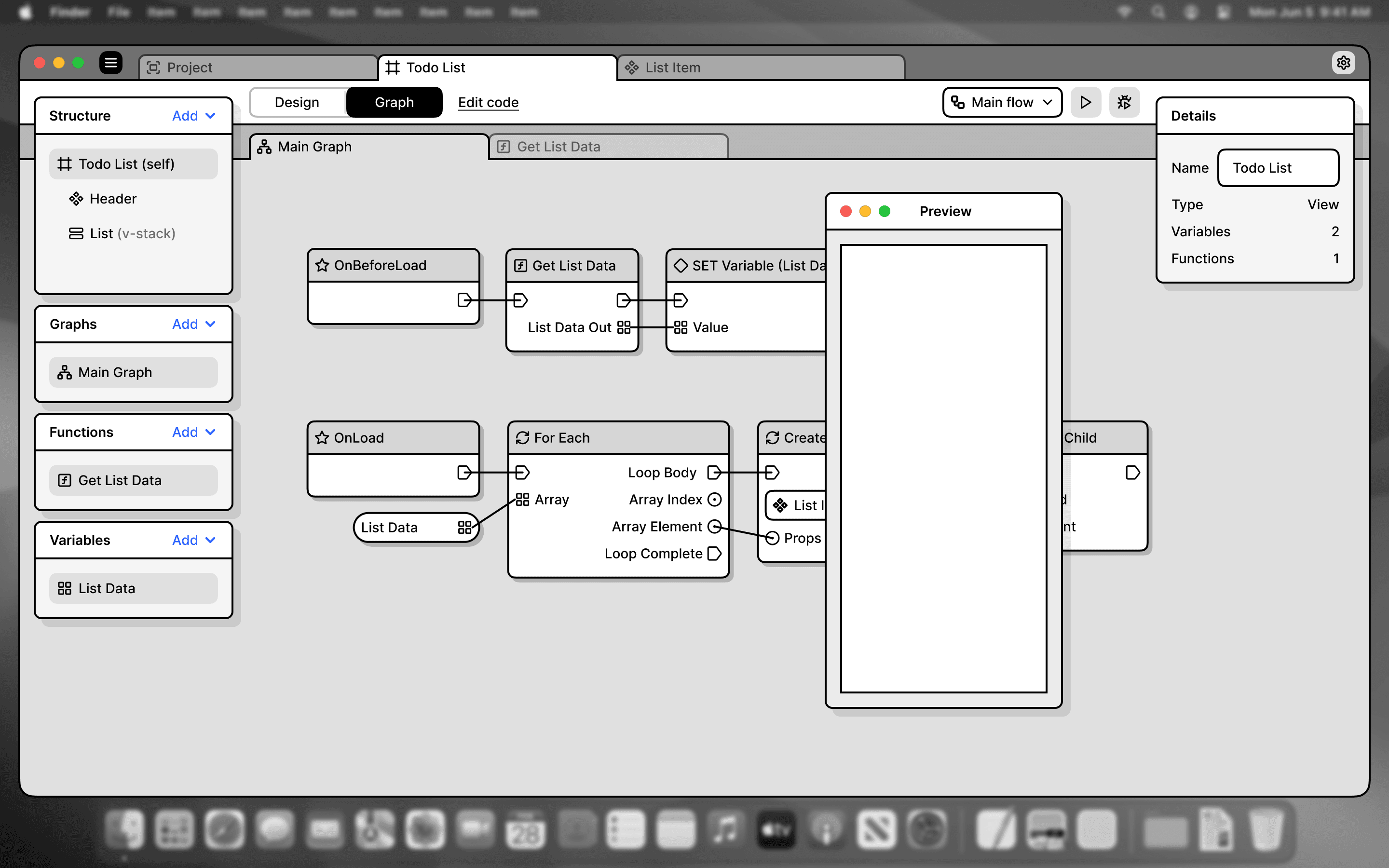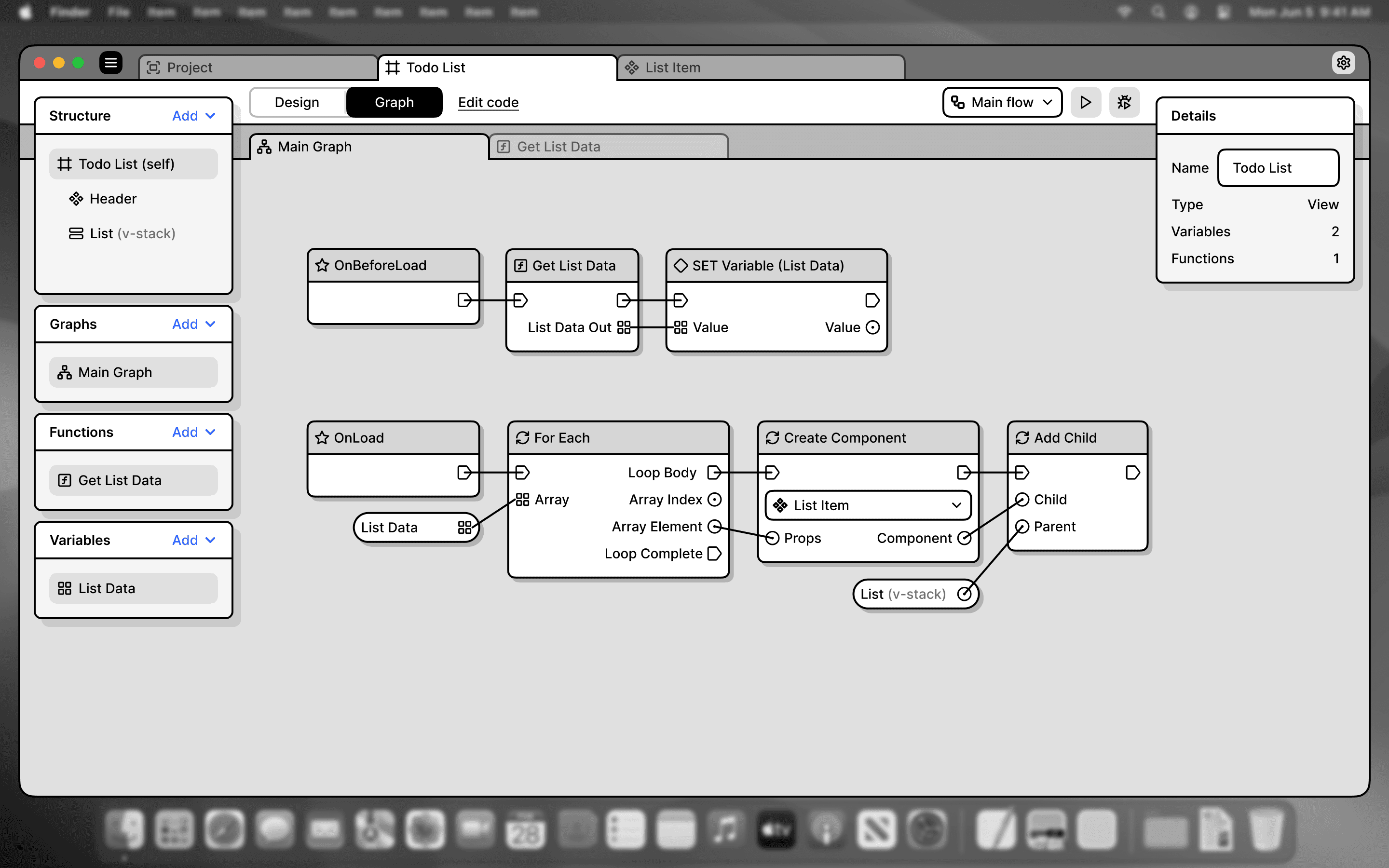Strella: The first IDE designed for design engineers.
Strella is a Visual Development Environment where layout, logic, and state come together in a single canvas. Inspired by Unreal Engine's Blueprints, it's built for design engineers—people who think visually but build interactively. It replaces the Figma-to-code pipeline with a unified authoring system.
A node-based graph editor for building product logic, a visual editor for component structure, and a runtime that stays in sync. Strella currently exists in wireframes and technical documentation—the most ambitious thing I've ever built, a bet on better tools that close the gap between design and implementation.
View site


 See more in my lab
See more in my lab